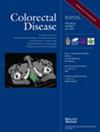Are women adequately informed about the use of instrumentation during vaginal delivery? A prospective review of the information on instrumental delivery provided to pregnant women and a retrospective review of the quality of consent for instrumental delivery
Abstract
Aim
Instrumental delivery typically describes the use of ventouse or forceps to aid vaginal delivery. They are used in 10%–15% of all vaginal deliveries and in almost a third of all primiparous deliveries. They are associated with an increased risk of maternal and neonatal injury. Such maternal injuries may lead to significant functional problems such as faecal incontinence and these conditions can be life changing. Informed consent should be obtained before any medical procedure. This should be taken well before the procedure, documented clearly, and alternatives should be discussed. The aim of this study was to assess the information provided to pregnant women and the quality of consent obtained prior to instrumental vaginal delivery.
Method
Patients were approached at 36 weeks’ gestation, prior to a planned vaginal delivery. The study was undertaken in the Obstetric Department of a busy District General Hospital in the UK. The patients’ understanding of labour, vaginal delivery and the use of instrumentation was assessed. Clinical notes of women who had an assisted vaginal delivery were reviewed to ascertain time of consent for use of instrumentation and amount of analgesia received at that point.
Results
A total of 138 patients were included for prospective assessment. Only 4% were able to describe all stages of labour, 17% could describe some of the stages of labour and 78% were unable to describe any of the stages of labour. Eighty per cent of the participants were unaware that instrumentation may be used during delivery, 21% were aware that it may be used if necessary and only 2% were aware of the risk of maternal injury. Fifty-nine case notes were reviewed. All had undergone either forceps or ventouse instrumentation. Eighteen per cent showed no record of informed consent. Sixty-one per cent showed evidence of verbal consent and 20% had a signed consent in the clinical notes. All had been consented for use of instrumentation during the second stage of labour, often when opioid analgesia had been administered prior to consent.
Conclusion
Knowledge about labour and the use of instrumentation during delivery appeared to be poor. The quality of consent taken for instrumental delivery appeared to be sub-standard. Larger studies, done post the COVID-19 epidemic, are needed to confirm that similar practices still occur in other hospitals and, if this is the case, urgent measures need to be taken to correct this.


 求助内容:
求助内容: 应助结果提醒方式:
应助结果提醒方式:


